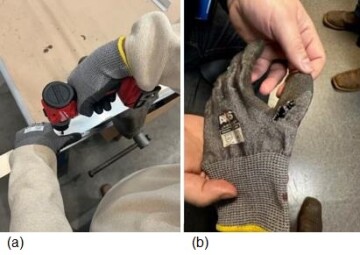The Bureau of Safety and Environmental Enforcement (BSEE) has observed a trend of safety incidents related to improper use of hand tools. This pattern has given rise to hand and finger injuries, emphasizing the need for future continuous vigilance and strict adherence to safety protocols. BSEE is informing workers and providing recommendations to help prevent future injuries.
Recent incidents include the following:
- An offshore worker was drilling holes in 2-in. angle iron for pipe supports using a handheld drill. The angle iron was held in a vise. The worker was wearing leather impact gloves while drilling in and reversing out the drill bit when it caught in the glove material. As a result, the worker’s left index finger was caught between the handle and the body of the vise, causing a laceration that required stitches. The drilling procedures and hazards were not covered in a job safety analysis.
- An offshore worker was using a hand drill when the thumb of his glove got caught in the drill bit (Fig 1a, hand placement), pulling his thumb into the drill bit. This caused a contusion to the employee’s left thumbnail bed (Fig. 1b, damaged glove) and a fractured thumb.

Source: BSEE
BSEE recommends that operators and their contractors, where appropriate, consider doing the following:
- Reviewing and discussing this BSEE Safety Alert with offshore employees and emphasizing the importance of hand placement to prevent hand injuries, as well as the need to remain diligent during routine tasks to identify work hazards
- Finding good footing while using hand tools, maintaining balance, and securing work with clamps or a vise to free both hands for safe use of power tools
- Anticipating the potential for the drill bit to bind, and direction in which the drill would spin, when using a hand drill.
- Wearing appropriate personal protective equipment, such as leather gloves, safety goggles, or face shields
- Inspecting tools before use and following manufacturer specifications
- Removing from service and tagging out any damaged tools
- Selecting and using tools that are appropriate for the task; never using tools for purposes other than what the manufacturer intended
- Ensuring tools meet all guarding and safety standards; never bypassing guards or using tools with broken or missing guards

